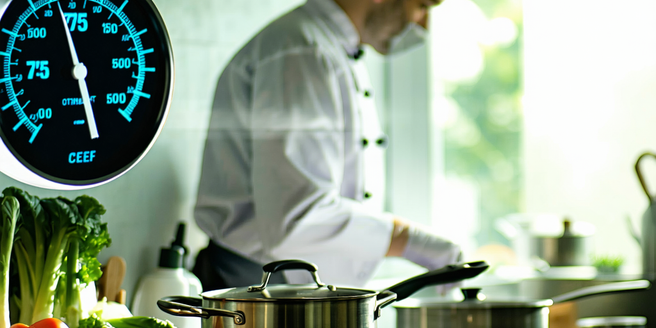
Understanding the Impact of Heat on Food Safety
High temperatures can pose significant risks to food safety, as they encourage the growth of harmful bacteria. Pathogens such as Salmonella and E. coli thrive in warm environments, making it crucial to understand how heat affects food. During summer months or in warmer climates, food can quickly reach the ‘danger zone’ between 40°F and 140°F, where bacteria multiply rapidly. Consuming food that has been left out too long in this temperature range can lead to foodborne illnesses. It’s important to monitor food storage conditions, maintain proper refrigeration, and ensure cooking at safe internal temperatures to prevent contamination. Regularly checking the temperature of food and using insulated containers during transport can help mitigate these risks and keep food safe to consume.
Best Practices for Safe Food Handling in Summer
Summer poses unique challenges for safe food handling due to higher ambient temperatures. To ensure food safety, maintain a clean cooking and preparation area, wash hands thoroughly, and use separate utensils for raw and cooked foods to prevent cross-contamination. It is essential to keep perishable items refrigerated until ready to use, and avoid leaving food out for extended periods, especially at gatherings. Use a food thermometer to check if meats are cooked to safe internal temperatures. Cooler bags can help in transporting food safely. Trust the senses, but when in doubt, throw it out: if food appears or smells off, don’t take chances. Staying informed about safe food practices can protect health in warmer months.
Storage Tips to Prevent Foodborne Illness
Proper storage is critical in preventing foodborne illness, especially in warm weather. Perishable foods should be kept below 40°F to inhibit bacterial growth. Utilize airtight containers to minimize exposure to air and moisture, which can aid in spoilage. For leftovers, refrigerate within two hours of cooking, or one hour if the temperature exceeds 90°F. Label and date all items in the fridge to ensure they’re used before they spoil. Freezing can be an effective method for extending shelf life, but avoid refreezing thawed foods. Additionally, organize your refrigerator to ensure air circulation and avoid overloading, which can lead to inconsistent temperatures. Regularly clean your fridge and check for expired items to maintain safe food storage standards.
Recognizing Signs of Food Spoilage in Hot Weather
Identifying signs of spoilage is key to preventing foodborne illnesses in hot climates. Visual cues, such as discoloration or mold, are clear indicators that food has gone bad. Unpleasant odors are another sign, as spoiled food emits a characteristic sour or rancid smell. Textural changes, like sliminess or a mushy consistency, can also point to spoilage. In packaged goods, swelling or leaking containers suggest bacterial activity inside. Trust your senses, but always practice caution: if any doubt exists about a food’s freshness, it is safer to discard it. Stay aware of the expiration dates on food items, and practice the ‘first in, first out’ rule to ensure older items are consumed before newer purchases.
Effective Cooling Strategies for Perishable Goods
Efficient cooling strategies are essential to preserve perishable goods, especially during transportation or in open-air markets. Insulated coolers and ice packs help maintain low temperatures. Pre-chill items before placing them in cooler environments to maximize efficiency. Avoid frequently opening the lid of coolers, as it allows cold air to escape, reducing effectiveness. Use block ice or ice packs, as they stay colder longer than cubed ice. For large quantities, dry ice can be an alternative, but handle with care due to its extremely low temperature. Constantly monitor the cooler’s interior temperature with a thermometer, ensuring it stays below 40°F. If possible, use a fridge for extended storage and keep items stored in the coldest part to prolong freshness.
Checklist for Outdoor Cooking and Picnics
When organizing a picnic or outdoor cooking event, preparation is crucial for food safety. Begin by making a list of perishable and non-perishable items, ensuring perishables are kept in a cooler. Use separate coolers for drinks and food to minimize unnecessary opening. Pack hand sanitizer, wet wipes, and clean utensils for hygiene. Make sure to preheat grill or cooking equipment to ensure thorough cooking. A food thermometer is essential for checking meat doneness. Provide shade for your food setup to protect from direct sunlight. Plan to prepare and cook perishable items on-site whenever possible. Dispose of leftovers if they’ve been outside over two hours, or one hour above 90°F. By adhering to these practices, enjoy safe and delicious outdoor dining experiences.
